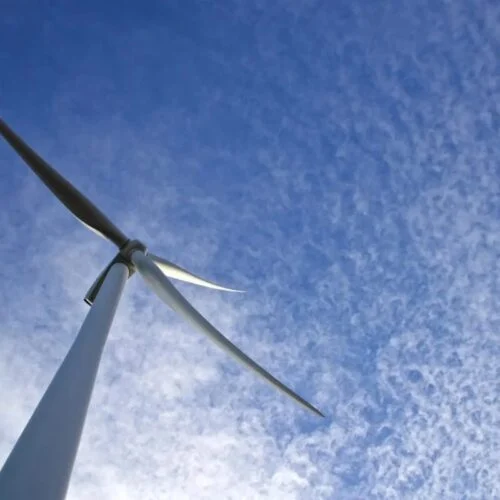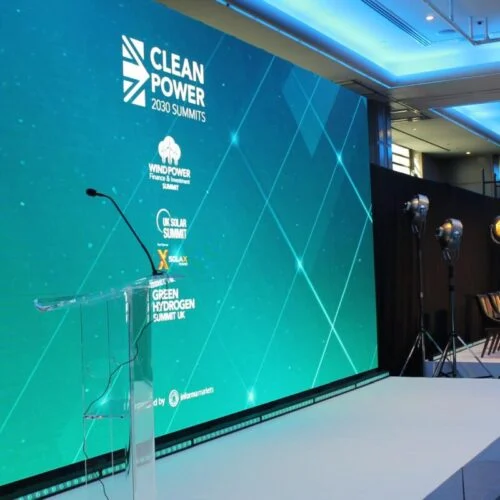Following on from a stable period with regards power prices in Britain, cold weather is pushing National Grid ESO to once again warm a coal unit as capacity looks tight. In this week’s Current± Price Watch – powered by Enact – we take a look at how the ESO is protecting supplies, the role of renewables over the winter and what Static Firm Frequency Response will look like next month.
Day Ahead: ESO issuing warming notice amid cold weather
After a stable week in terms of the energy sector – which saw a high of £188.1/MWh and a low of £112.5/MWh within the Day Ahead market – National Grid ESO has issued a Balancing Mechanism notification to warm one of EDF’s 400MW West Burton A coal units as temperatures drop.
“The ESO has issued a notification that we will warm one of our five winter contingency coal units for potential use on Tuesday 7 March,” said an ESO spokesperson.
“This notification is not confirmation that the unit will be used on Tuesday, but that it will be available to the ESO, if required. The ESO as a prudent system operator has developed these tools for additional contingency to operate the network as normal. This does not mean electricity supplies are at risk.“
National Grid ESO has warmed its contingency coal units four times this winter, however it is yet to use them. It previously warmed one or more of the five units available to the operator on 7 February, 26 January, 23 January and 12 December.
| Name | Volume | Date |
| West Burton A (EDF) | 2 x 400MW | 1 Oct 2022 – 31 Mar 2023 |
| Drax | 2 x 570MW | 1 Oct 2022 – 31 Mar 2023 |
| Ratcliffe (Uniper) | 1 x 480MW | Nov 2022 – 31 Mar 2023 |
National Grid ESO signed contracts with Drax, EDF and Uniper in 2022 following concerns over the system stability. The use of them is the last ‘Enhanced Action’ – along with the use of its new Demand Flexibility Service which has seen more than ten tests as well as its first live event – open to the operator ahead of having to resort to emergency measures. These were set out by the ESO at its Autumn Markets Forum in September.
The units give the ESO an additional 2.5GW of buffer capacity, and are set to cost between £340 million and £395 million, subject to the procurement and use of the coal.
Intraday: Zero carbon sources generate 47% of electricity in February
Like the Day Ahead market, APX Mid prices over the past week were fairly stable, with a high of £209.15/MWh on 5 March and a low of £96.53/MWh on 4 March.
As such, March has gotten off to a similar start to February, with gas making up the bulk of generation, closely followed by wind.
In February 47% of our generation came from zero carbon sources, peaking at 80% in one day 🍃
— National Energy System Operator (@neso_energy) March 3, 2023
We achieved 73 consecutive coal free hours with coal contributing just 1.4% to our mix, a huge reduction from 10.2% coal in Feb 2017.
👀 Check out February’s full stats 👇
Renewables have been key to keeping power prices in Britain steady over winter. New research from the Energy and Climate Intelligence Unit’s (ECIU) Winter Power Tracker found that wind, solar and hydro generated 47TWh of energy between 1 October 2022 and 28 February 2023 – enough to power 55% of UK homes for a year.
“We’re seeing the old electricity system give way to the new, with renewables becoming the backbone and displacing more and more gas. Battery storage is ramping up faster than expected, boosting the UK’s energy security and leaving us less exposed to international gas markets,” said Jess Ralston, head of energy at ECIU.
“Lifting the ban on onshore wind will help. But with the US and the EU going gangbusters for renewables, eyes are on the Government, the Chancellor and the Budget to decide on how the UK stays an attractive market for the investments that will ultimately bring down bills.”
Imbalance: Moyle Interconnector leads the way in mock SFFR auction
The imbalance price in Britain hit a high of £285/MWh on 5 March, and a low of £44.5/MWh on 28 February.
Over the past week, National Grid ESO ran a mock auction of the new Static Firm Frequency Response service (SFFR), which it will use to secure its dynamic or non-dynamic response to changes in frequency in the future.
This follows announcing in September that it is indefinitely postponing the phaseout of its Dynamic and Static FFR systems. At the time, it set out a new consultation on both Dynamic and SFFR, following which it hopes to continue to procure the services beyond March 2023.
“Static FFR differs from Dynamic FFR, despite being in the same service historically. It deals with significant drops in frequency, rather than second-by-second small variations. It is therefore activated less often, and assets who participate in this market have to be able to remain active for 30 minutes,” explained Shivam Malhotra, consultant at LCP Delta.
“Nothing is changing in this regard; ESO are leaving the use of this service as is, but moving it to its own (improved) auction.”
The new SFFR is set to go live on 31 March 2023, with delivery starting from 1 April, when the ESO will be looking to secure 250MW of response per EFA block for the first three months.
High-level details on the results of the mock auction, according to Malhotra, include:
- Clearing prices varied between £3.75/MW/h and £6.80/MW/h.
- The Moyle Interconnector (500MW Scotland <> Northern Ireland) led the way, holding between 21-33% of the contracts across the 6 EFA blocks.
- Excluding Moyle, assets were of a similar mix to those who tender into regular FFR, here the majority being batteries, biomass and supply-side assets.
To find out more about LCP Delta’s Enact platform, click here or follow them on Twitter or LinkedIn for the latest market updates.






